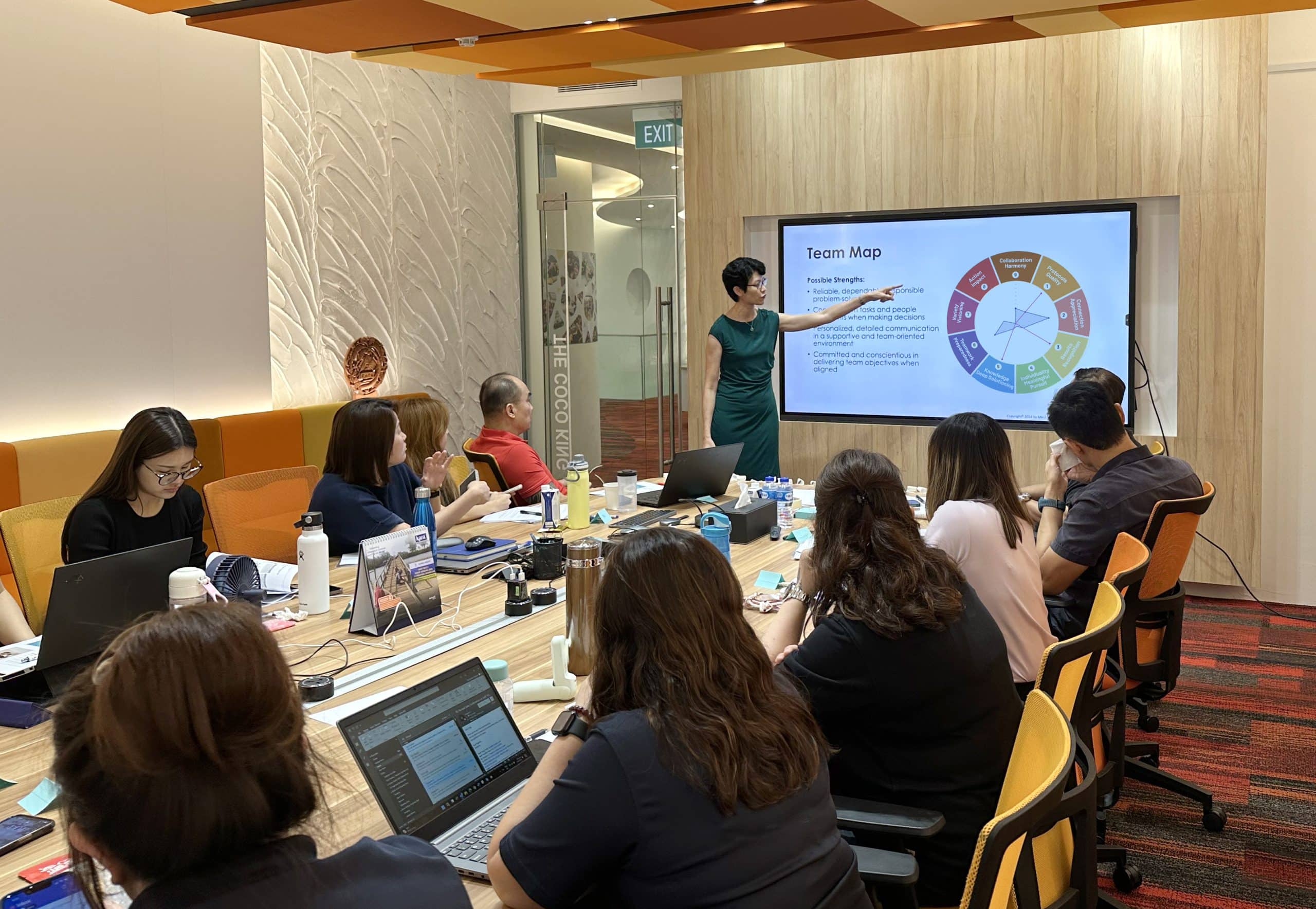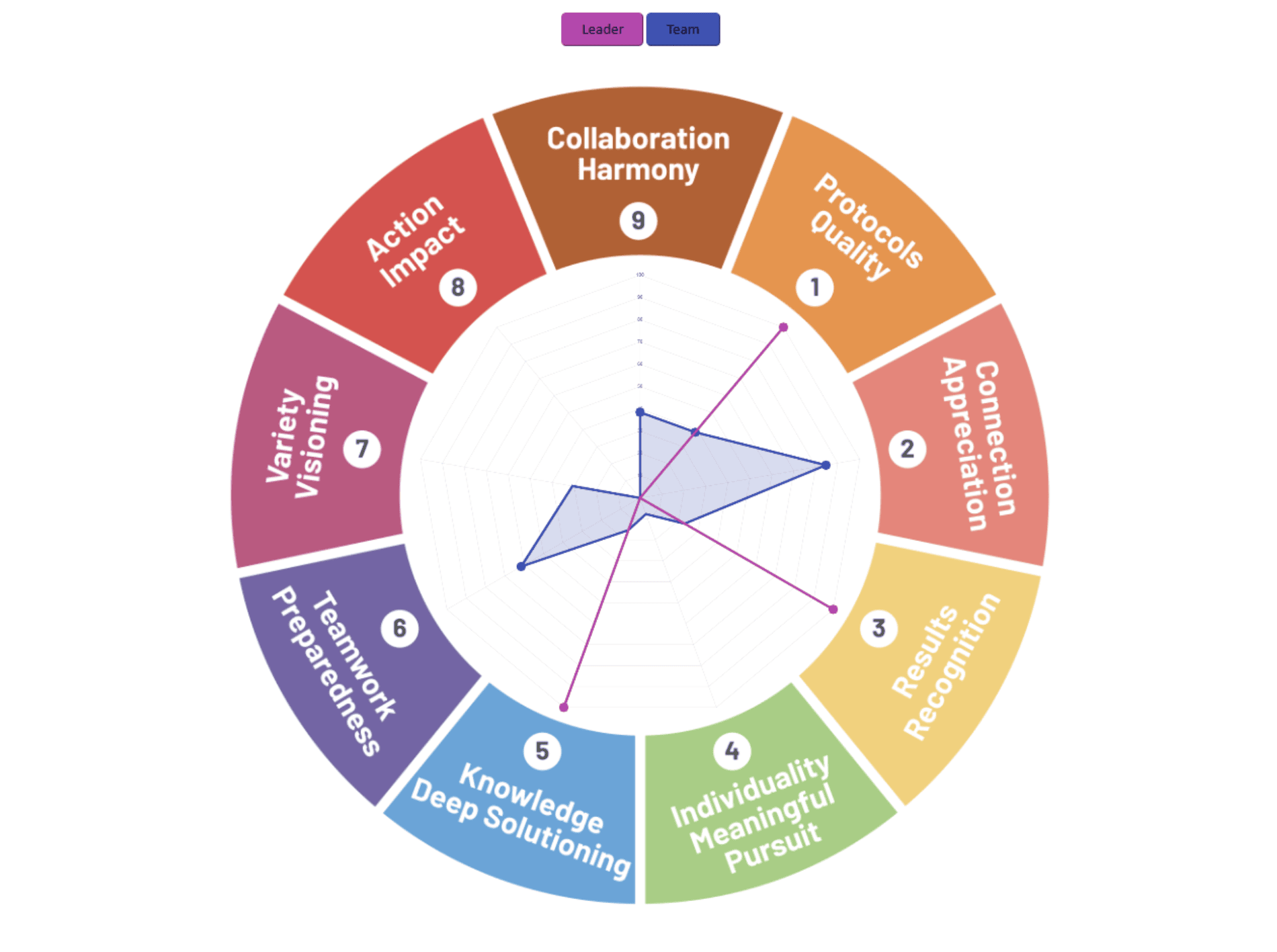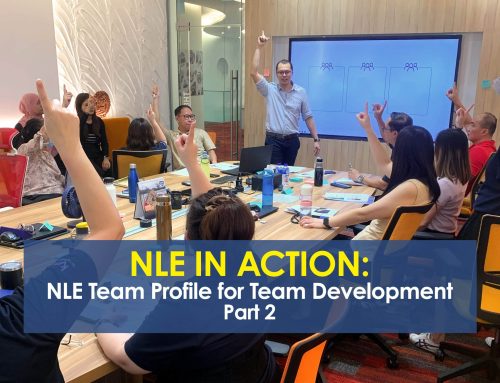
Neuro-Linguistic Enneagram (NLE) in Action:
NLE Team Profile for Team Development (Part 1)
When it comes to team development, it is easy to focus on the tasks to be done, but difficult to address elusive things like team dynamics, relationships and culture.
The Enneagram is an excellent tool for personal mastery, leadership development, and understanding and nurturing team dynamics.
“Ennea” means “nine”, and “gram” means “points or types”. Often used as a personality typology, it highlights why we do what we do. An insightful profiling tool for individuals, teams, and even organisation cultures, Enneagram can be used to predict behavioural tendencies and preferences, especially when people interact in group settings.
Created by Mind Transformations, the Neuro-Linguistic Enneagram (NLE) builds on the richness of the Enneagram personality system to empower individuals and teams by using Neuro-Linguistic Programming (NLP) principles and tools to overcome inherent personality and team challenges.
Within the NLE system, the NLE Team Profile© is a versatile and reliable predictor of how a team shows up. We’ve used it for over a decade in our consulting and team facilitation work to facilitate deep conversations with teams and their leaders and empower them to propel themselves to the next level.
Case Study: Gearing Up for Greater Growth
In the post-pandemic period, an MNC in the retail sector was experiencing rapid growth through brand acquisitions and store expansions.
Their regional Sales Operations (Sales Ops) team (15 people), covering the Southeast Asia (SEA) region, had seen a headcount increase, accompanied by staff attrition of approximately 25% in the preceding eight months.
They engaged Mind Transformations Consulting to conduct a team workshop to enhance team awareness and team understanding so that team members can work more effectively with one another and respond efficiently to change.
Effective team development goes beyond the surface stories about a team - to see the team’s underlying psychological dynamics.
The Team
The Sales Lead (Leader) has a wealth of experience in retail sales and has been with the organisation for six years. He was promoted the previous year and tasked to grow the team to support the business expansion.
The Sales Ops team provided sales support to the retail outlets and managed inventory planning, procurement operations, and reporting. Due to expansion and staff attrition, 4 of the 15 members were new (under six months) to the team. 5 more people would be hired by the end of the year.
NLE Team Map©: Highlighting the relationship between the Leader and the Team
The first tool in the NLE Team Profile© is the NLE Team Map©. It contrasts the profile of the Leader and the Team. It can be used to illustrate potential positives and negatives in the relationship between them and creates an opportunity for parties to have an open discussion and agree on how they want to take things forward.
The Team Map is shown below.

The Team Map – Leader and Team Profiles
The NLE Team Map© enables predictions of a team’s collective priorities and ways of working.
Leader Profile
The Leader’s NLE profile is 3-1-5.
This profile is highly competency-driven and task-focused, hands-on with a can-do attitude. Coupled with an analytical mind, he has quiet solitude in small group settings but can be suave and high-energy when he’s networking, or with a large audience. A high-profile leader in the organisation and manages senior leadership well.
Team Profile
The Sales Ops team has an aggregated profile of 2-6-9.
In team settings, team dynamics of people interactions come to the forefront. So, instead of personality traits, we now look at team dimensions.
A 2-6-9 team values personal relationships, teamwork, and harmonious working relations. The team culture is likely to be sociable, sensitive to stakeholders’ needs, collaborative, and responsible in fulfilling their duties.
When the team is aligned, people tend to stay together, and everyone will be well-supported. Strengths are leveraged to drive performance, and everyone appreciates one another. Departures can be hard and affect the morale of the team in general.
Disagreements or conflicts may be avoided, or tensions may be addressed early on to prevent a full-blown crisis – and if that happens, cliques can form, and strong undercurrents may impair performance.
The work of sales operations is detailed work – planning, tracking, and executing – and the tasks can be routine, manual (if systems are not robust), and appear trivial (backend support). This team profile of 2-6-9 has the natural inclination to perform these types of work well.
Mapping the profile data points into scenarios simulates possible upsides and foretells challenges the team is likely to face continually.
Given the situation the Sales Ops team was in, these were the relevant insights worth highlighting.
A) Leader vs Team Dynamic
The Leader (profile 3-1-5) has a can-do attitude and is credible in the organisation. The challenge of being tasked to steer this change for business expansion can be very attractive to him.
A Leader with this profile tends to set clear direction and strategy with a vision that is inspiring, challenging, and achievable.
He is a good complement to the team. The team is likely to respond well to and support the team goals, especially if they feel that the Leader cares about them and the team’s well-being.
The Leader, being hands-on, will like to be updated on progress and be kept informed at all times, and the team will gain clarity and confidence in the Leader if communication is frequent and clear.
The Leader provides good shielding from top management’s pressure on the numbers and can likely fight for the team for rewards and recognition. The team is likely to feel that they are in a winning team and achieving good progress and results. In times when results may not show, the Leader is able to motivate and inspire the team with direct feedback, calibration of plans, and reviewing of resources.
Conversely, tensions may arise if the Leader becomes overly demanding and micro-manages the team. The lack of care – perceived or real – will cause the team to withdraw their commitment and increase staff attrition and frustration, driving down trust and morale.
The team may perceive the Leader as over-driving (values results over efforts), non-empathic, and self-serving (taking care of own achievement). The Leader may find the team unproductive (spending time on socialising), non-performing (values relations over results), and unstructured (lack of systems in the way things are done).
B) Team Response to Change
The Leader may be excited by the change – especially if the rewards and recognition for him and the team are clear.
A 3-1-5 profile tends to be flexible and objective when driving change. The team tends to have stronger inertia toward change, and a few things should be put in place to bring the team through their resistance faster:
- Give a heads-up on upcoming changes;
- Listen to their concerns & address them, acknowledge their importance;
- Co-create solutions with them;
- Provide ongoing support during and after the change.
If the team is aligned, change can happen quickly with high morale throughout the process, and new team members are onboarded and supported – people will be brought along together with the change. Teamwork and inclusivity ensure that performance remains stable and it can further bond the team together, deepening the trust and understanding.
If the team is not aligned – amongst themselves and between the Leader and the Team – the change can be dramatic, emotional, and low-morale. Team members can explicitly and implicitly complain, yet without solving real issues, and attrition will worsen. Stakeholders in the organisation will suffer from the team’s poor performance and grievances.
Clients have consistently validated our description of the unspoken dynamics of their teams using the NLE Team Map©.
As a consultant and facilitator, firstly, the NLE Team Map© enables you to anchor your credibility and gain the client’s trust. You are one foot through the door in working with them. Secondly, the NLE Team Map© provides more data points to base your solution on - to introduce interventions and coaching.
In Part 2 of the case study, we will unpack more findings using the second tool in the NLE Team Profile©, the Four Pivotal Points (4PP)©. We’ll also highlight the recommendations and solutions we implemented with the client.
If you're a leader, team coach or facilitator,
you can leverage the intelligence of the Neuro-Linguistic Enneagram (NLE) methodology and learn how to read and interpret a team’s profile to facilitate and coach them through the NLE Team Dynamics Analyst Certification.
You will begin your journey with a solid grounding in understanding human personality using NLE through the NLE Practitioner Certification.





